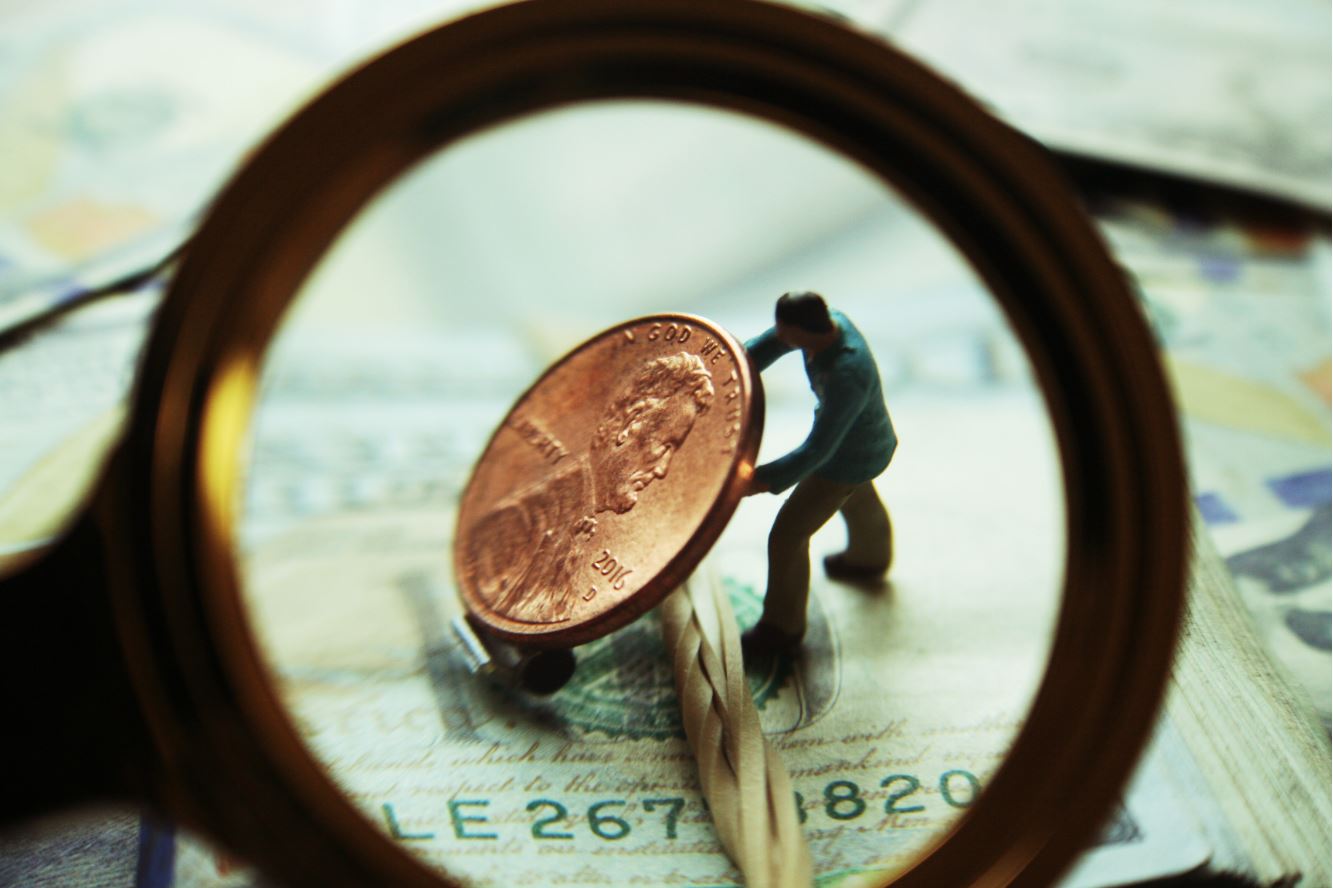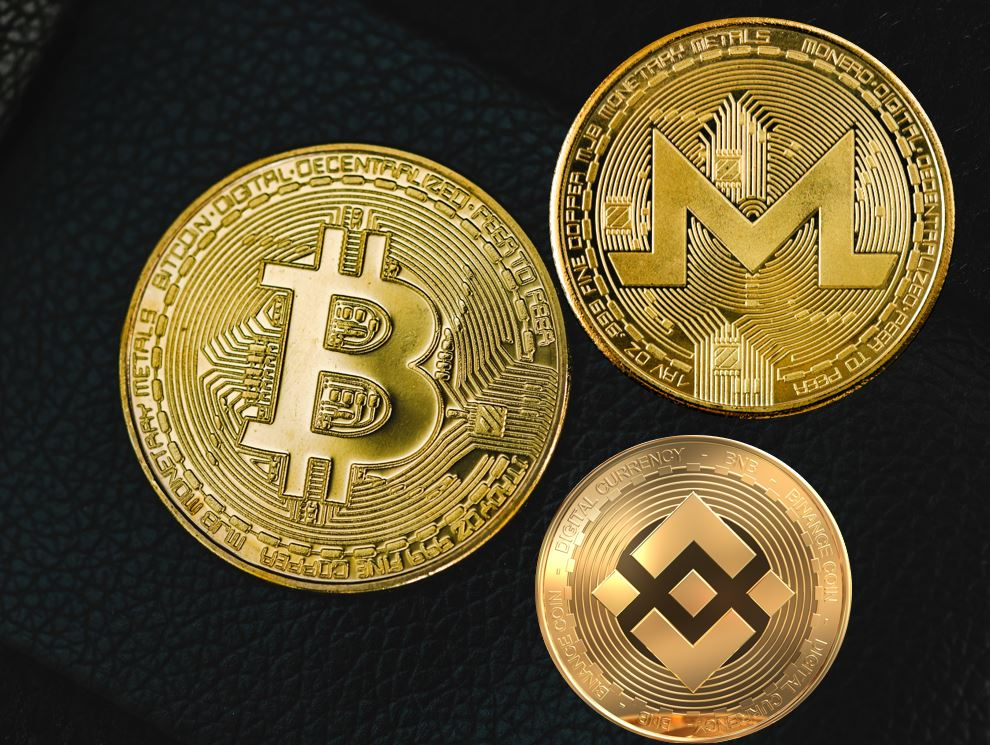What are Risky Investments?
Risky Investments have a high probability of loss. Risky investments may have a high upside, but not all risky investments are bad investments.
In this article we'll analyze the risk and opportunity of 10 risky asset categories. We'll also discuss ways you can get an edge in each type of asset.
10 risky investments

Futures and options
Risk Level: Medium (3 out of 5)
Futures and options use to be a lot riskier because you had to buy these derivatives in lots of 100 contracts. The small exchange allows investors to buy derivatives in smaller lot sizes. Thanks to this innovation, beginner investors can buy smaller contract lots. Buying in smaller quantities allows new investors to build less risky, diversified portfolios. Futures and options are investments that can lose 100% of their value, so they are more risky than stocks.
Opportunity of Return: High
Derivatives amplify the potential return of the underlying asset. For example, when a stock increases in value 5%, the options on that stock could see a 30% return or higher. The trade-off for amplifying return potential? Derivatives can lose their entire value on the exercise date.
How to Get an Edge in Futures and Options
The small exchange is a great way for new investors to get an edge. When you buy smaller contract lots, you can diversify your holdings in contracts. The Small Exchange has great guides on Futures and Options to get you started in derivatives.

Precious metals
Risk Level: Mild (2.5 out of 5)
There are many ways to gain exposure to precious metals. You can buy an ETF like SPDR Gold Shares or iSharesSilverTrust. You can buy derivatives in precious metal commodities. Finally, you can buy physical precious metals like coins, bars, or jewelry.
Gold and silver are examples of precious metals used as a safe haven asset during a market sell-off. Precious metals are less risky than derivatives because their value will not go to zero.
Opportunity of Return: Medium
Precious metals are unlikely to become worthless and are less risky than derivatives. Gold and silver will hold their value as they have real uses in manufacturing. Precious metals are more volatile than stocks because their value is partially subjective.
How to get an Edge in Precious Metals
The price movement of precious metals is not correlated to the price movement of stocks. Precious metals sometimes have an "inverse beta". This means metal prices move in the opposite direction of stock prices. The beta of precious metals and their ETFs are typical near zero or even negative.
During a stock market sell-off, precious metal prices are typically unaffected. Metal prices may even increase in value as investors use precious metals as a safe haven. Cash is a depreciating asset so use precious metals as a hedge against a market sell-off instead of cash.

Micro-cap stocks
Risk Level: Medium (3 out of 5)
Micro-cap stocks have total valuations that may only be in millions of dollars or less. In some extreme cases, their valuation is only hundreds of thousands of dollars. Trading volumes are very low and groups of small traders or funds can manipulate prices. Micro-caps can fall to zero if they are unable to sustain the business.
Opportunity of Return: High
Every blue chip company in the U.S. was likely as small as a micro-cap stock when they were first created. Hence, the opportunity of return is very high. But there is a reason why investing in micro-cap stocks is like "looking for a unicorn". Very few micro-cap stocks are successful. Conduct extensive research and risk management when investing in micro-cap stocks.
How to get an Edge in Micro-Cap Stocks
Otc.watch is a community for micro-cap and small-cap stocks. This is a great resource to start a watch list of micro-cap stocks.

Foreign Exchanges
Risk Level: 2.5 out of 5
Foreign exchanges trade stocks in companies incorporated outside the United States. So here is the thing about investing: long term its better in free democracies. Countries with strong adherence to laws will protect investors and businesses. Authoritarian countries may seize your assets arbitrarily or steal technology from your companies.
Opportunity of Return: Mild
If you invest in foreign countries with a Democracy, the risk is in line with the U.S. stock exchange.
How to get an Edge in Foreign Exchanges
The key take-away is to watch how well a country keeps to their laws. Authoritarian countries may nationalize corporations or create unstable business environments. An example is Russia who seized foreign assets after invading Ukraine. Russia also had to shut down their stock market as their stocks plummeted.

Art
Risk Level: HIGH (4 out of 5)
Art is a very risky investment for new beginners. The price of art is based on the feelings of the art investors as there is no objective value in art. For example, a food stock can give you objective value by the amount of products made per month. Art only has subjective value. For a beginner investor, beware that the learning curve to be successful in art is high.
Opportunity of Return: Low
The art trade is a very lucrative business with the global sale of art reaching $50.1 billion in 2020. Unfortunately for beginner investors the opportunity of return is low. This is because the cost of entry into the art business is high.
How to get an edge in Art
Be sure to conduct research in the art market and understand the tastes of those in the market.
Collectibles

Risk Level: high (4 out of 5)
Collectibles have a similar barrier to entry to art. But one advantage beginner investors have is that they understand certain niche collectibles.
If a new investor plays video games, they may understand video game collectibles. Or if they enjoy watching sports, a new investor may understand sports memorabilia.
A beginner investor may even have a collection already without realizing. Old toys and family heirlooms passed down generations may now be collectibles.
Opportunity of Return: Mild
Similar to art, getting into collectibles has a barrier to entry. But beginner investors can enter because they may be in a collectible niche already. Collectibles like comics, trading cards, and sports memorabilia are less expensive than art. This allows new investors to enter these niche spaces.
How to Get an Edge in Collectibles
Start with what you know! Check out auctions to see the current values of collectibles you already own. For example, use your knowledge in trading cards games to help value the trading cards you own.

Any investment offered as a sure thing
Risk Level: DO NOT INVEST (5 out of 5)
Never invest in a "sure thing" before conducting your own detailed research. No investment is so important that you cannot take an hour to first research it. The person who is telling you this is either:
- Trying to profit off of you
- Bragging
- Not adept at investing
- Got lucky
Lottery tickets and Time Shares
Risk Level: DO NOT INVEST (5 out of 5)
Don't even think about Time Shares as an investment if you're a beginner investor. Time shares are for vacations only.
And just don't invest in lottery tickets... period.
The bottom line
One of the biggest mistakes made by beginner investors is taking on too much investment risk. But just because an investment is risky, does not mean you should avoid investing in the asset Managing investment risk is how you become successful at investing.












What are Risky Investments?
Risky Investments have a high probability of loss. Risky investments may have a high upside, but not all risky investments are bad investments.
In this article we'll analyze the risk and opportunity of 10 risky asset categories. We'll also discuss ways you can get an edge in each type of asset.
10 risky investments
Futures and options
Risk Level: Medium (3 out of 5)
Futures and options use to be a lot riskier because you had to buy these derivatives in lots of 100 contracts. The small exchange allows investors to buy derivatives in smaller lot sizes. Thanks to this innovation, beginner investors can buy smaller contract lots. Buying in smaller quantities allows new investors to build less risky, diversified portfolios. Futures and options are investments that can lose 100% of their value, so they are more risky than stocks.
Opportunity of Return: High
Derivatives amplify the potential return of the underlying asset. For example, when a stock increases in value 5%, the options on that stock could see a 30% return or higher. The trade-off for amplifying return potential? Derivatives can lose their entire value on the exercise date.
How to Get an Edge in Futures and Options
The small exchange is a great way for new investors to get an edge. When you buy smaller contract lots, you can diversify your holdings in contracts. The Small Exchange has great guides on Futures and Options to get you started in derivatives.
Precious metals
Risk Level: Mild (2.5 out of 5)
There are many ways to gain exposure to precious metals. You can buy an ETF like SPDR Gold Shares or iSharesSilverTrust. You can buy derivatives in precious metal commodities. Finally, you can buy physical precious metals like coins, bars, or jewelry.
Gold and silver are examples of precious metals used as a safe haven asset during a market sell-off. Precious metals are less risky than derivatives because their value will not go to zero.
Opportunity of Return: Medium
Precious metals are unlikely to become worthless and are less risky than derivatives. Gold and silver will hold their value as they have real uses in manufacturing. Precious metals are more volatile than stocks because their value is partially subjective.
How to get an Edge in Precious Metals
The price movement of precious metals is not correlated to the price movement of stocks. Precious metals sometimes have an "inverse beta". This means metal prices move in the opposite direction of stock prices. The beta of precious metals and their ETFs are typical near zero or even negative.
During a stock market sell-off, precious metal prices are typically unaffected. Metal prices may even increase in value as investors use precious metals as a safe haven. Cash is a depreciating asset so use precious metals as a hedge against a market sell-off instead of cash.
Micro-cap stocks
Risk Level: Medium (3 out of 5)
Micro-cap stocks have total valuations that may only be in millions of dollars or less. In some extreme cases, their valuation is only hundreds of thousands of dollars. Trading volumes are very low and groups of small traders or funds can manipulate prices. Micro-caps can fall to zero if they are unable to sustain the business.
Opportunity of Return: High
Every blue chip company in the U.S. was likely as small as a micro-cap stock when they were first created. Hence, the opportunity of return is very high. But there is a reason why investing in micro-cap stocks is like "looking for a unicorn". Very few micro-cap stocks are successful. Conduct extensive research and risk management when investing in micro-cap stocks.
How to get an Edge in Micro-Cap Stocks
Otc.watch is a community for micro-cap and small-cap stocks. This is a great resource to start a watch list of micro-cap stocks.
Foreign Exchanges
Risk Level: 2.5 out of 5
Foreign exchanges trade stocks in companies incorporated outside the United States. So here is the thing about investing: long term its better in free democracies. Countries with strong adherence to laws will protect investors and businesses. Authoritarian countries may seize your assets arbitrarily or steal technology from your companies.
Opportunity of Return: Mild
If you invest in foreign countries with a Democracy, the risk is in line with the U.S. stock exchange.
How to get an Edge in Foreign Exchanges
The key take-away is to watch how well a country keeps to their laws. Authoritarian countries may nationalize corporations or create unstable business environments. An example is Russia who seized foreign assets after invading Ukraine. Russia also had to shut down their stock market as their stocks plummeted.
Art
Risk Level: HIGH (4 out of 5)
Art is a very risky investment for new beginners. The price of art is based on the feelings of the art investors as there is no objective value in art. For example, a food stock can give you objective value by the amount of products made per month. Art only has subjective value. For a beginner investor, beware that the learning curve to be successful in art is high.
Opportunity of Return: Low
The art trade is a very lucrative business with the global sale of art reaching $50.1 billion in 2020. Unfortunately for beginner investors the opportunity of return is low. This is because the cost of entry into the art business is high.
How to get an edge in Art
Be sure to conduct research in the art market and understand the tastes of those in the market.
Collectibles
Risk Level: high (4 out of 5)
Collectibles have a similar barrier to entry to art. But one advantage beginner investors have is that they understand certain niche collectibles.
If a new investor plays video games, they may understand video game collectibles. Or if they enjoy watching sports, a new investor may understand sports memorabilia.
A beginner investor may even have a collection already without realizing. Old toys and family heirlooms passed down generations may now be collectibles.
Opportunity of Return: Mild
Similar to art, getting into collectibles has a barrier to entry. But beginner investors can enter because they may be in a collectible niche already. Collectibles like comics, trading cards, and sports memorabilia are less expensive than art. This allows new investors to enter these niche spaces.
How to Get an Edge in Collectibles
Start with what you know! Check out auctions to see the current values of collectibles you already own. For example, use your knowledge in trading cards games to help value the trading cards you own.
Any investment offered as a sure thing
Risk Level: DO NOT INVEST (5 out of 5)
Never invest in a "sure thing" before conducting your own detailed research. No investment is so important that you cannot take an hour to first research it. The person who is telling you this is either:
Lottery tickets and Time Shares
Risk Level: DO NOT INVEST (5 out of 5)
Don't even think about Time Shares as an investment if you're a beginner investor. Time shares are for vacations only.
And just don't invest in lottery tickets... period.
The bottom line
One of the biggest mistakes made by beginner investors is taking on too much investment risk. But just because an investment is risky, does not mean you should avoid investing in the asset Managing investment risk is how you become successful at investing.